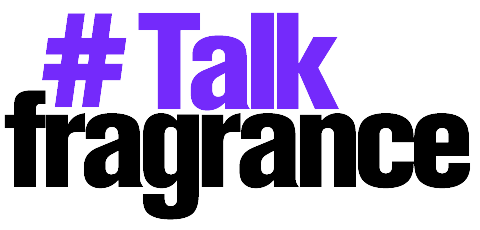Table of Contents
Attar, often referred to as the “liquid gold” of perfumery, is one of the oldest forms of fragrance known to humanity. Its natural, alcohol-free composition and deeply concentrated aroma evoke a sense of sophistication and connection to the earth. But how many types of attar are there? What are attars made of, and how can you explore the world of these exquisite perfumes?
If you’re a perfume enthusiast, a collector of fine fragrances, or someone interested in aromatherapy, this blog is your definitive guide. From attar’s rich history and unique distillation process to its diverse types and uses, here’s everything you need to know about this timeless aromatic treasure.
What Are Attars? A Brief Introduction
Attar, also known as “itra,” is a natural perfume oil derived from botanicals like flowers, herbs, spices, barks, and even earthy elements like soil or rain. Unlike modern perfumes such as Eau de Cologne (EDC), Eau de Toilette (EDT), or Eau de Parfum (EDP)—which often rely on alcohol or synthetic compounds—attars are free of alcohol, making them a favorite among those looking for pure, lasting fragrances.
A Glimpse Into History
The origins of attar can be traced back thousands of years to ancient India and Arabia, where they were crafted for royal families and religious rituals. Over time, attars gained global recognition for their therapeutic and aromatic qualities. Indian cities like Kannauj, often called the “Perfume Capital of India,” became synonymous with traditional attar production.
Why Is Attar Significant?
- Cultural and Spiritual: Attars hold significant importance in ceremonies, meditation, and prayers.
- Sustainability: Made from natural ingredients, they are eco-friendly compared to alcohol-based fragrances.
- Longevity: Their oil-based nature means attars last much longer than conventional perfumes.
Distillation Process: The Craft Behind Attar
Attars are produced via a meticulous and time-honored process known as steam distillation.
Traditional Methods
The raw materials (flowers, herbs, or wood) are placed in large copper stills called “deg.” Then water is added, and the concoction is sealed and slowly heated. The vapors are passed through a cooling chamber where they condense into fragrant oils, forming the attar.
Modern Methods
Advances in essential oil extraction, like CO2 extraction, have streamlined the attar-making process. However, traditionalists value the older methods for their artisanal touch and unparalleled depth of aroma.
Types of Attar Based on Their Base Materials
Attars are classified primarily by the materials they are made from. Here’s a look at some of the most popular categories:
1. Floral Attars
- Rose Attar
Known as the “queen of flowers,” rose attar offers a sweet, romantic aroma. Suitable for sensitive skin, it is a popular choice for women’s fragrance oils.
- Jasmine Attar
Famed for its intoxicating and sensuous notes, jasmine attar is widely used in spiritual practices and luxury perfumery.
- Kewda Attar
Extracted from the pandanus flower, Kewda attar carries a distinctive woody floral scent often used in rituals.
2. Herbal Attars
- Sandalwood Essential Oil Attar
This is a staple in the attar world, offering a creamy, woody base that blends beautifully with other oils.
- Vetiver (Khus) Attar
Known for its cooling, earthy aroma, vetiver is ideal for summer use and is prevalent in aromatherapy.
- Saffron Attar
Rare and luxurious, saffron attar emits a warm, spicy fragrance often associated with refinement and royalty.
3. Earthy Attar
- Mitti Attar
Capturing the scent of rain hitting dry earth, Mitti attar is one of the most unique and beloved attars. It’s especially cherished in regions like India and the Middle East.
Seasonal Attars
Attars are often crafted to suit the changing seasons, with summer and winter blends offering distinct benefits:
- Summer Attars
Cooling fragrances like vetiver, kewda, and mitti attar are perfect for warm climates due to their light and breezy aroma.
- Winter Attars
Warm attars like saffron, oud, and musk are ideal for colder months, creating a cozy olfactory cocoon.

Geographical Variations in Attars
Indian Attars
Indian attars, from places like Kannauj, often favor traditional formulas using natural and sustainable ingredients. Common names include rose, sandalwood, and vetiver.
Middle Eastern Attars
Middle Eastern fragrances are often rich, opulent, and layered with exotic materials like oud and musk or Bakhoor (a wood chip soaked in scented oils).
Uses of Attar
Attars serve a variety of purposes beyond just perfumery. Their versatility makes them invaluable across many domains:
- Perfumery: Worn directly on the skin as a long-lasting fragrance.
- Aromatherapy: Known to alleviate stress, improve focus, and uplift moods.
- Traditional Medicine: Used in Ayurveda and Unani medicine for their healing properties.
How to Choose and Store Attar
Choosing the Best Attar
- Identify your preferred base materials (floral, herbal, earthy).
- Consider the occasion and season when selecting the attar.
- Always buy attar made from natural or ethically sourced ingredients.
Storing Your Attar
- Keep attars in dark glass bottles to protect them from sunlight.
- Store them in a cool, dry place to prevent oxidation.
FAQs About Attar
How many types of attar are there?
Attars can be broadly classified into floral, herbal, and earthy types, with numerous subcategories depending on the region, season, and raw materials used.
Which attar is best?
The best attar depends on your personal preference and needs. Sandalwood, rose, and oud attars are perennial favorites for their universal appeal.
What is attar made of?
Attars are made from natural ingredients such as flowers, spices, herbs, and wood distilled into a base oil, often sandalwood essential oil.
What are oud attar types?
Oud attar is derived from the resin of agarwood trees. Its types vary based on the region they come from, such as Indian oud or Cambodian oud.
What makes attars different from modern perfumes?
Attars are natural, alcohol-free, and concentrate on harvesting pure oils, whereas modern perfumes often rely on synthetic ingredients.
The Timeless Appeal of Attar
Attars hold a special place in a world increasingly dominated by synthetic perfumes, offering an all-natural, deeply personal fragrance experience. Whether you’re a seasoned fragrance enthusiast or a curious newcomer, attars open a door to a sensory world of timeless aromas.
Start exploring the rich world of attars today to find your signature scent—one drop is all it takes!













